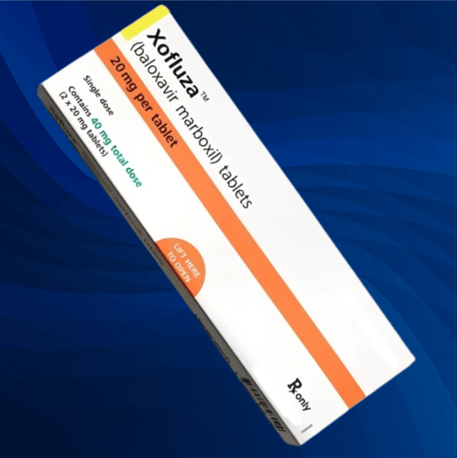
Know your Antivirals
No one should get the Flu in the 21st century.
Dr Mark Hunter
2/17/20254 min read


These days, big pharma monopolies are spending great deals of money to promote fear of viruses. Every day I see dozens of hyperbolic ‘faux-news’ stories about deadly viral infections. Fear is good for business. It’s part of the Shock Doctrine: frighten the public, they become infantilized and pliable; ready to be saved (exploited).
There are many viruses. Vaccines cannot protect against many viruses such as HIV, flu, COVID, etc., because those viruses mutate too quickly. This mutation process is called, “Broad Antigenic Shift”. In summary, Vaccines are largely limited in value due to the broad Antigenic Drift and Antigenic Shift of the viral genes and structure.
Good news! If you have antivirals at home, and take them as soon as you feel sick, it will knock the virus out within hours! The key is to take it immediately. That is why you have to have it in your house ahead of time. This also prevents the frequent secondary bacterial infections that tend to follow infection by a flu virus.
All you need to know now is what antivirals to have around the house prior to infection!
Flu germs are part of the Orthomyxoviridea family of viruses – Which include Influenza virus (types A, B, C). The rhinovirus & coronaviridae are also part of the Orthomyxoviridea family. Both also cause the common cold. Human parainfluenza viruses (HPIVs), also in this family of viruses, causes respiratory disease among children and the immunocompromised.
The incubation period for influenza is short, on average 2 days (range 1-4 days). People infected with influenza are considered infectious from 1 day before onset of symptoms, and viral shedding is greatest in the first 3-5 days of illness.
Recommendations for flu treatment may change according to the current epidemiological surveillance data. Flu viruses frequently mutate and by this learn to beat antiviral medicines. The local epidemiological medical consortium should be monitoring the reported activity of antiviral usefulness and resistance. On this basis they are key players to promote sensible forecasts and recommendations to community clinicians and patients. Because drug resistance is ever-evolving, and changes from community to community, clinicians must frequently check-in with their epidemiological health care officers for the latest antiviral recommendations. Ultimately, for practical reasons, COST is one of the first considerations in making a decision of which antiviral to use.
Single-dose drugs (Peramivir, Laninamivir, Baloxavir), are first-choice considerations due to convenience and assured compliance.
There are a couple excellent BROAD antiviral meds which are terrific in killing many different viruses. Let's look at a couple:
Ribavirin - Trade Names: Ibavyr, Rebetol, Virazole, Copegus, Moderiba, Ribasphere, Pegasys Rbv. In 1993, the FDA approved its use for Influenza A&B. Note: nebulised ribavirin has proven efficacy over oral administration in the case of respiratory viral infection.
Other FDA approved uses include: Sofosbuvir plus ribavirin or sofosbuvir plus ribavirin & interferon for Hepatitis C; and the treatment of RSV bronchiolitis in infants and children.
However, there are many other ‘off label’ (empirically proven) uses such as treatment of: Zika Virus (ZIKV) - Flaviviridae family (e.g., tick-borne encephalitis virus); measles, subacute sclerosing panencephalitis (SSPE), mumps, rhinoviruses; HIV; Arenaviruses (including haemorrhagic fever); Bunyaviruses (hantaviruses) & related haemorrhagic fevers, rift valley fever, et. al.); HSV (herpes labialis, herpetic stomatitis, genital herpes); Measles. Additional clinical trials: Chronic Fatigue Syndrome, Myalgic Encephalitis, , etc.
Another terrific option is Favipiravir (T-705) which also possesses broad-spectrum antiviral effects. In clinical trials, Favipiravir has been administered in gram amounts to patients without significant side effects.; and is good against many NAI-resistant pandemic influenza viruses. It has an excellent therapeutic index that is far superior to that of ribavirin in the treatment of influenza. However, its effectiveness against Ebola was only found to be moderate in one trial.
Favipiravir’s trade name is Avigan. Method of Dosage (administration): Nasal (best) Oral (BID 5 days). Approved uses: Japan/China 2002; Completed USA & European Phase 3 clinical trials: Influenza A&B. Off label uses: Ebola, COVID; various human and avian viruses;various NAI-resistant virus strains; and a wide variety of RNA viruses, etc.
I would NOT recommend Oseltamivir (Tamiflu) - It's a crappy antiviral. There are much, much better ones. Including those that only require a single dose.
Sofosbuvir is an interesting antiviral with a terrific safety profile: I am very eager to see upcoming studies with Sofosbuvir. It is single dose oral and very, very safe.
Treatment with antivirals could be considered when at least 2 of 7 symptoms exist (cough, nasal symptoms, sore throat, myalgia, chills/sweats, fatigue, headache), and treatment is within 48 h of the onset of influenza symptoms. Key exclusion criteria includes impaired respiratory or renal function, a history of cardiovascular disease, poorly controlled diabetes mellitus, use of immunosuppressive therapy or immunocompromised patients, infection or suspected infection requiring antibacterial therapy, and the presence of clinically significant disorders that required hospitalization. Always consult drug inserts for additional specifics.
It is important to shut down viral infections right away. A viral infection lowers the host defenses against many bacteria. Secondary bacterial pneumonia by Staphylococcus aureus, Streptococcus pneumoniae, and others are common. For all of these reasons it is wise to hold antiviral medicines in reserve and take them immediately upon contracting a viral infection.
The importance of treatment is economic, quality of life (QOL), to prevent subsequent bacterial infections (immunity can’t fight both virus and bacterial infections simultaneously) and other medical conditions. It is not unusual for a viral infection to promote replication of bacteria in the teeth and gums, leading to infections in the oral cavity and lungs. An acute influenza infection may promote otitis media, sinusitis, viral and bacterial pneumonia, acute lung injury, myocarditis, pericarditis, septicaemia, encephalitis, and/or death. In addition, influenza disease may trigger worsening of chronic medical conditions present before acquiring the influenza infection, especially underlying cardiopulmonary conditions and diabetes, and increase the risk of complications such as cardiovascular events like myocardial infarction and stroke. In developed countries, the majority of deaths attributable to influenza occur in people aged over 65 years, especially those over 80 years with pre-existing health problems and residents of Aged Care Facilities (ACFs). In addition, accentuated transmission of influenza within closed institutions is a recognized problem, which results in significant morbidity and costs.
For these reasons, not to mention the fact you don’t have to suffer, patients and clinicians should seriously consider having antiviral medicines available in the medicine cabinet before viral sickness sets in.
Mark Hunter DC, MD FCP Internal Medicine


